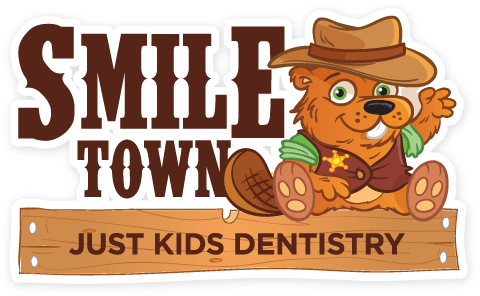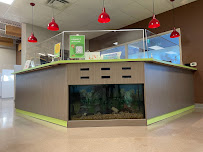Dental Sedation Clinic With Anaesthesia for Kids

Awake
Awake dentistry does not involve any form of sedation, but more distraction and comfort behaviour modification techniques. Some general dentists are naturally gifted in dealing with children; however our SmileTown kids dentists are formally trained in these techniques, leading to a more comfortable and stress-free dental experience for children of all ages without the use of sedation.
What you see
Movement and vocalization is expected, however is limited due to behavioural management techniques used to keep your child relaxed.
Training
Kids Dentist
General DentistMethod
- Tell-show-do/voice control
- Non-verbal communication
- Positive reinforcement
- Distraction
- Parental presence/absence protective
- Stabilization
Appointment, Freezing, Predictability
- Multiple appointments may be required if several areas need treatment
- Requires local anaesthesia (freezing)
- Unpredictable; depends on age, pre-existing level of anxiety, type and amount of dental treatment
Conscious dental sedation
During conscious sedation your child is not asleep. It makes you feel more calm, but you are still alert. Conscious sedation in Waterloo is commonly achieved with laughing gas, drinks or a combination of both. Conscious dental sedation can be unpredictable and results can vary from child to child, especially for those with issues with breathing through the nose. Other reasons conscious sedation in Cambridge may not be ideal for your child is because of the age of your child, their level of stress and anxiety as well as the amount of dental work required.
Nitrous oxide is one of the most commonly used sedatives in dentistry, and with good reason – it is simple to receive and it quickly leaves the body once the procedure is complete, leaving your child with no lingering side effects.
What you see
Movement and vocalization expected
Training
Kids Dentist
General DentistMethod
- Nitrous oxide (laughing gas) inhalation
- Oral sedation (drink or pill)
- Nitrous oxide plus oral sedation
Appointment, Freezing, Predictability
- Multiple appointments may be required if several areas need treatment
- Requires local anaesthesia (freezing)
- Can be unpredictable; depends on age, type and amount of dental treatment, pre-existing level of anxiety
- Some children may still become agitated or distressed
Deep dental Sedation
Your child will be fully asleep during deep dental sedation. At Our Clinic, our dentist anaesthesiologists are trained, registered and licensed to provide deep sedation to children. Deep sedation is commonly achieved with incremental doses of a medication (the medication is effective for 3–5 minutes) through an intra venous (IV). As an example, deep sedation is what adults experience to allow for colonoscopy procedures to be successful and comfortable. This same technique and medications can be used to treat children for restorative dental procedures. Deep sedation in Waterloo is extremely predictable. Placing an IV in an awake child can be challenging, therefore, children are initially sedated with an anaesthetic vapour while they watch a movie prior to IV placement.
This form of sedation also allows for us to complete all treatment required during a single appointment, rather than having you come back multiple times. This is a very predictable source of sedation and is most commonly used for younger, high-anxiety, fearful or uncooperative patients or for those who require extensive or technique sensitive dental work. You will always have a consultation with one of our anaesthesia providers to explain deep sedation, all available options, as well as to discuss anaesthesia safety.
A dentist anaesthesiologist is the only dentist that has this level of training.
What you see
Some movement
No vocalizationTraining
Dentist Anaesthesiologist
Method
Intra venous (IV) sedation
Appointment, Freezing, Predictability
- Usually one treatment appointment
- No local anaesthesia (freezing) unless tooth is removed
- Predictable; treatment will be completed fully
General Anaesthesia
General anaesthesia is commonly used for operations in hospitals. General anaesthesia involves placing an endotracheal (breathing) tube and using anaesthetic vapors and other intra venous (IV) medications to keep a patient asleep. General anaesthesia is extremely predictable. As with deep sedation, children are initially sedated with an anaesthetic vapour while watching a movie prior to IV placement.
Dentist anaesthesiologists and medical anaesthesiologists have this level of training.
What you see
No movement
No vocalizationTraining
Dentist Anaesthesiologist
Physician AnaesthesiologistMethod
Anaesthetic vapour inhalation through an
endotracheal tubeAppointment, Freezing, Predictability
- One treatment appointment
- No local anaesthesia (freezing) unless tooth is removed
- Predictable; treatment will be completed




